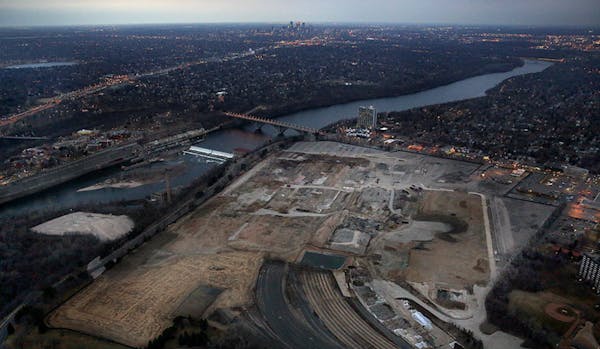The proposed green space is a winner, with a pond for ice skating and trails for biking and walking. But housing density — with some 4,000 new housing units and related traffic expected to squeeze into a 122-acre area — is either concerning or thrilling, depending on whether residents believe planners' projections.
St. Paul has finally unveiled a vision for the former Ford plant site in Highland Park that neighbors can see — parks here, roads there, zoning indicating building heights and what kind of development goes where. After nearly a decade of imagining life after Ford, residents and businesses can point to what excites them — or worries them — as the clock ticks closer to a final plan and a 2017 City Council vote.
"I think they did a marvelous job with this," said area resident Kevin Gallatin, who also sits on the Highland District Council board. "Most fears were traffic-related, but plans have relieved people."
The answers are as varied as you'd expect from a neighborhood of 25,000 people, bordered by tony Mississippi River Boulevard mansions to the west and south and by more modest bungalows to the east and north. Many have praised city officials and staff for listening to their hopes for the site. The Highland Ford plant opened in 1926 and closed in 2011.
Char Mason, who has lived just a couple blocks north of the site for 28 years, worries about increased traffic and parking bleeding onto her street.
"It seems very dense," she said. "It's a huge number of people to insert in a neighborhood that doesn't have any real [traffic] access."
Then there's Peter Armstrong, a member of the long-standing Ford site task force who is also a district council board member: "It think the city staff has done a great job doing the best they can to make as many people as possible happy about this. But some people look at this zoning plan as it might not be bold enough. … This is for what Highland will be for the next 80 years."
Years of planning
Considering the thousands of ideas, suggestions, desires and fears expressed by area residents over several years, the plan received mostly high marks, said Kathy Carruth, executive director of the Highland District Council.
Residents who attended a Nov. 14 presentation on the plan were struck by the density, pleased by the parks and curious about how the Ford site would be connected to the rest of Highland Park, she said.
"People are really interested and excited by what the city is presenting," she said. "And there is a strong feeling that the city has listened."
For that, she credits Principal City Planner Merritt Clapp-Smith.
"She's really a rock star," Carruth said. "She is a good listener, she's a great presenter."
Clapp-Smith said that the huge scale of the Ford project "made it important from the beginning to figure out how to best involve area residents."
The first stage was to develop a large vision and major priorities and concerns. That started in 2007. Then came figuring out key topics and how to approach them before fleshing out ideas and going back to people saying "does this look like what you had in mind?"
That led to a more formal proposal, which was presented last month.
Planners envision a development that would mix new housing to the south and west with new retail along Ford Parkway and Cleveland Avenue, opening some streets to through traffic that once dead-ended at the site. Housing would be mostly multi-unit, with river-area fourplexes mimicking the look of nearby mansions, and buildings getting taller the farther you go to the east.
Officials estimate the development will add 1,500 jobs and increase the property's tax value from $1.2 million to $22 million when complete.
Traffic concerns linger
Planners have called for an interconnected system of streets, bikeways and walkways to reduce the number of trips taken by car, and manage the traffic effect.
Frank Jossi, vice president of the Highland District Council, said residents along Cleveland, Cretin and Finn Street worry about a bigger-than-expected uptick in traffic.
"A lot of people don't believe the projections, or that the next generation isn't going to drive as much as they do," he said. "But I think that they did their homework and they did it carefully."
A formal master plan for the site will be presented to the city's Planning Commission in the spring and to the City Council during the summer of 2017. Final adoption is expected in late summer or early fall. Officials have said that they plan to begin marketing the site to a master developer in late 2017 or early 2018.
City Council Member Chris Tolbert, who represents the area, estimates he's attended at least one Ford-related meeting with constituents each week. He expects it to continue, as neighbors help refine the project.
Mason, who admits traffic and density worry her, acknowledged that most neighbors — those enthused by the plan and those less so — share an overarching desire.
"I just think it needs some finessing, and more input from the people who are going to inherit this," she said. "We want this to be an extension of our neighborhood that feels good and cohesive."
Staff writer Jessie Van Berkel contributed to this report.
James Walsh • 651-925-5041
8 months in jail for Blaine man who caused 120-mph crash hours after he was caught speeding

Daughter sues St. Paul, two officers in Yia Xiong's killing

